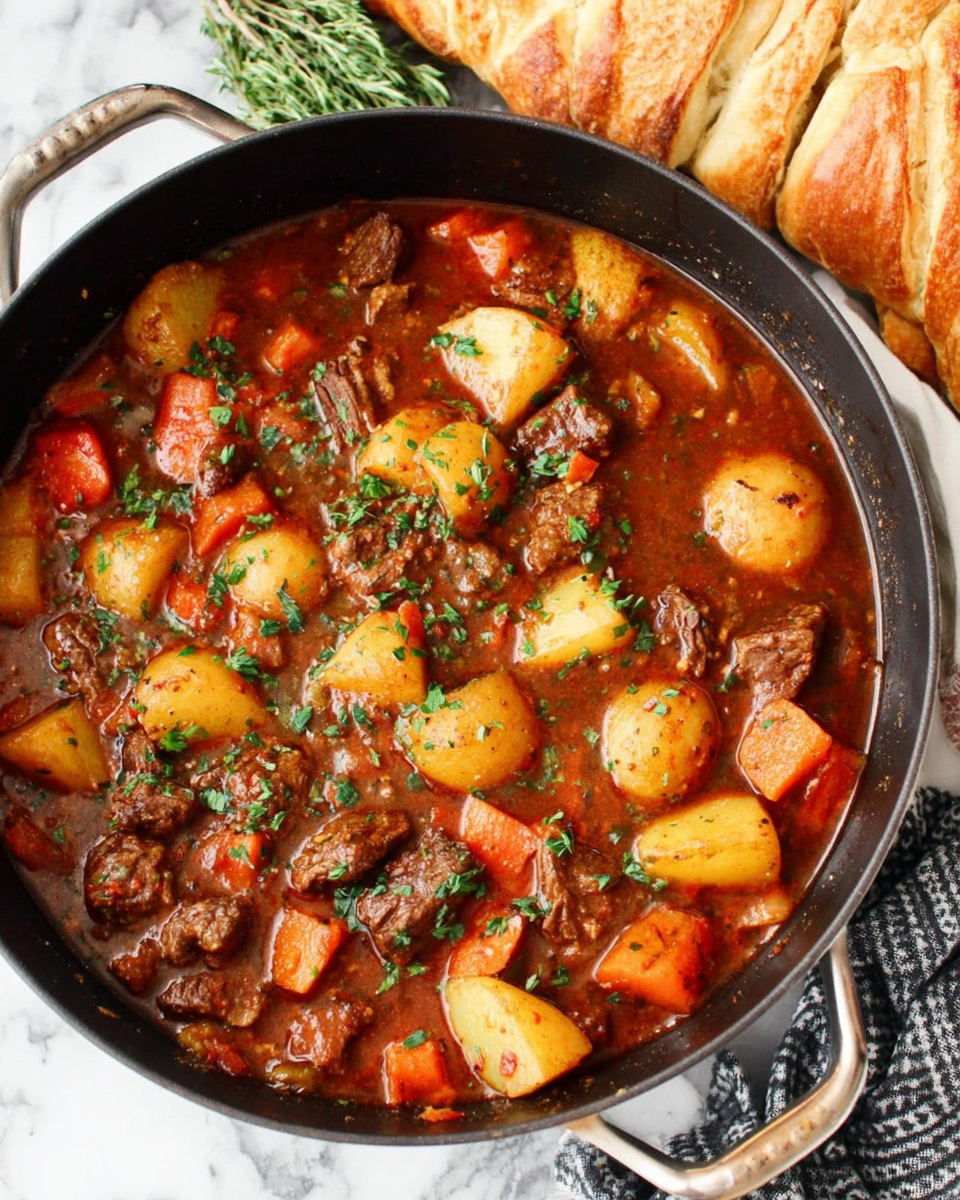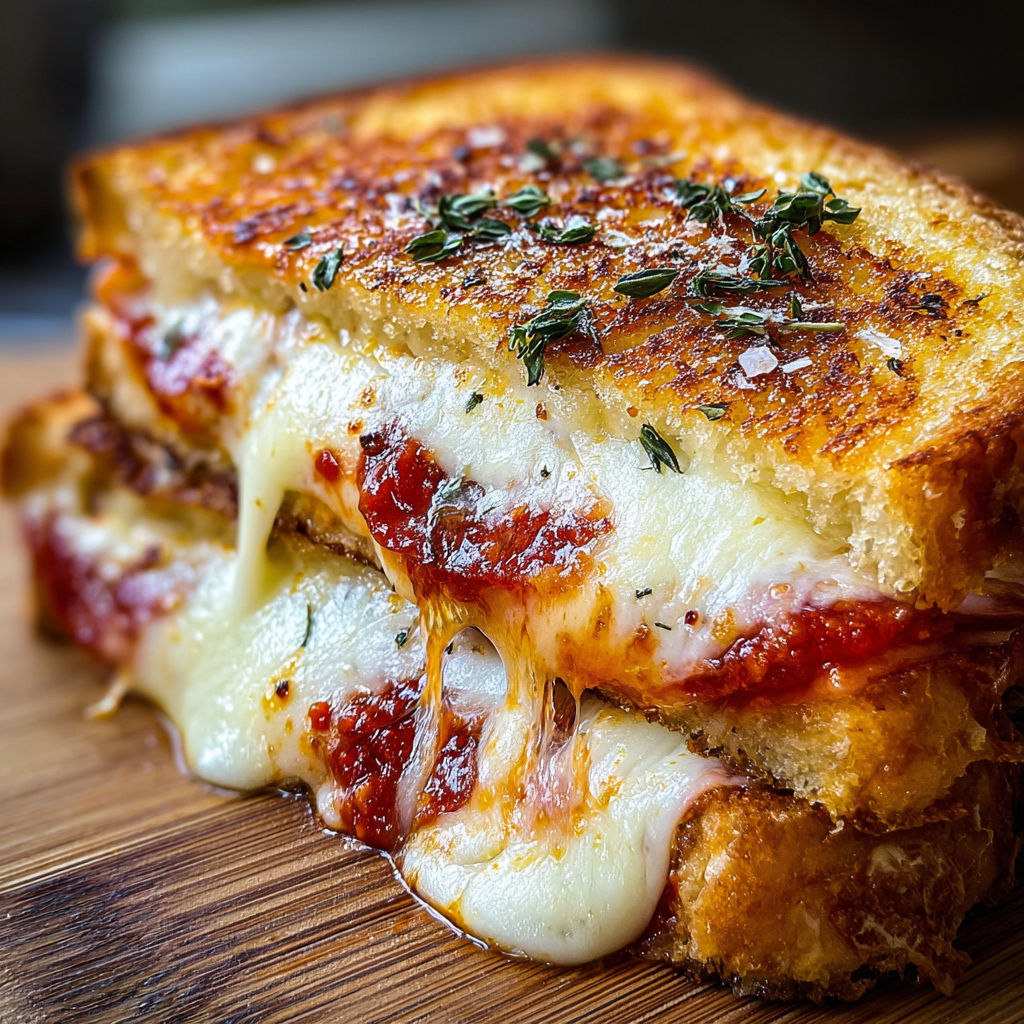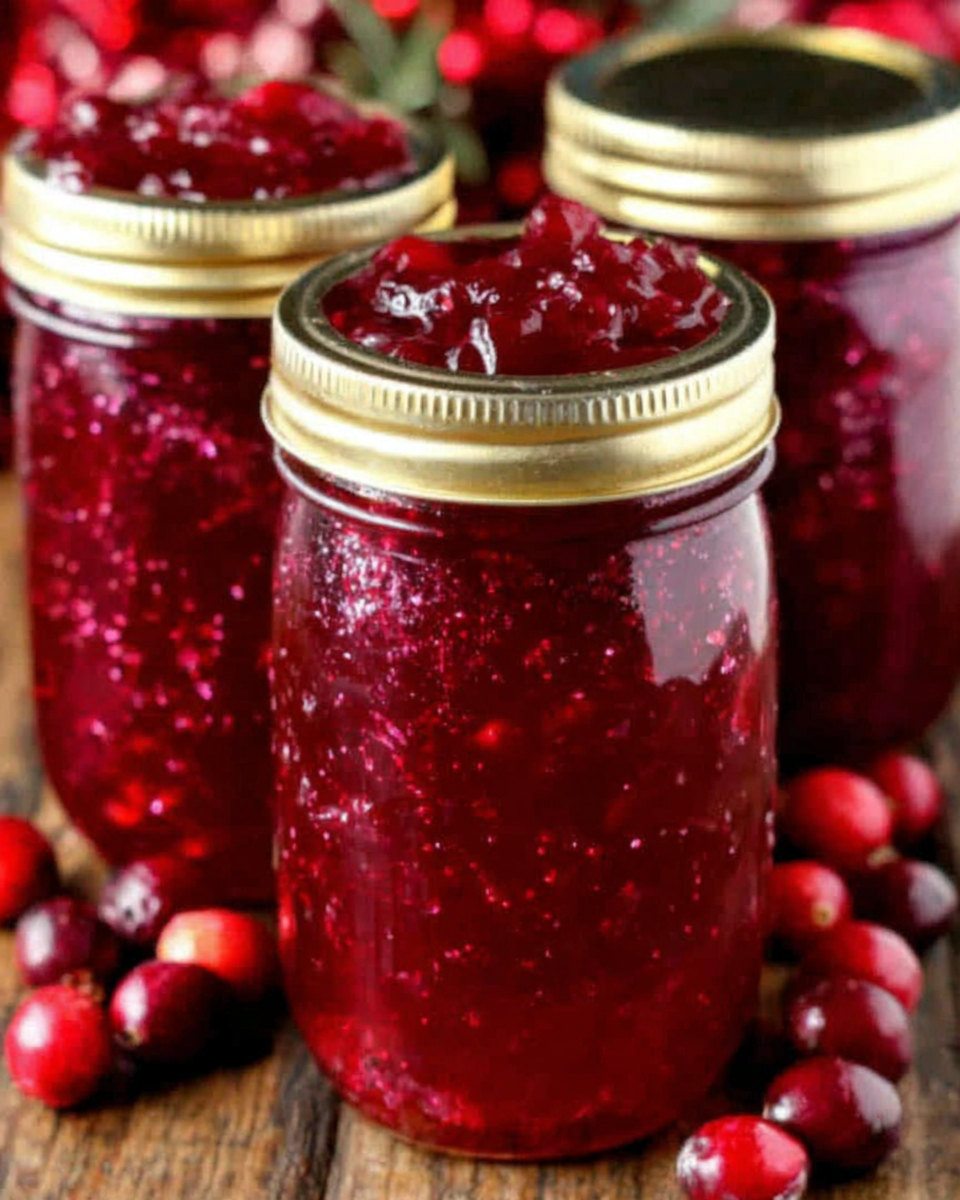Introduction
As the seasons change and the chill in the air begins to settle, there's nothing quite like a hearty bowl of beef stew to warm your soul. This dish, rich in flavor and brimming with tender cuts of beef and vibrant vegetables, is not just a meal; it's a comforting embrace on a cold day.
The beauty of beef stew lies in its simplicity and versatility. With slow cooking, you allow the flavors to meld beautifully, resulting in a dish that feels both wholesome and indulgent. Perfect for family gatherings or a cozy night in, this recipe brings together classic ingredients in a way that’s sure to please.
Ingredients
- 2 lbs chuck roast, cut into 1-inch cubes
Chuck roast is ideal for stew as it contains connective tissue that breaks down during slow cooking, resulting in meltingly tender meat. Its rich, beefy flavor enhances the overall taste of the stew. - 1 teaspoon salt
Salt is crucial for enhancing the flavors of the meat and vegetables. It helps draw out moisture from the beef, making it more flavorful while seasoning the dish as a whole. - 1/2 teaspoon black pepper
Black pepper adds a subtle warmth and depth to the dish. It complements the savory elements of the beef and balances the overall flavor profile. - 2 tablespoons vegetable oil
Oil is used for searing the beef, creating a delicious crust that adds flavor. It also helps to prevent sticking and ensures that the meat cooks evenly. - 1 onion, chopped
Onions contribute sweetness and acidity to the stew, helping to build a complex flavor base. As they cook, they caramelize and soften, adding depth to the overall dish. - 3 cloves garlic, minced
Garlic lends a warm, aromatic flavor that enhances the character of the stew. The richness of garlic becomes more pronounced when sautéed, melding beautifully with the beef. - 4 cups beef broth
Beef broth serves as the stew's liquid base, imparting a deep, savory flavor. It also helps to tenderize the meat as it simmers for hours. - 2 cups carrots, sliced
Carrots not only provide a pleasing sweetness but also add a pop of color and texture to the stew. They soften during cooking, enriching the broth with their flavors. - 2 cups potatoes, diced
Potatoes are a classic addition to stew, offering heartiness and substance. As they cook, they absorb flavors from the broth, resulting in a comforting texture. - 1 cup peas, frozen or fresh
Peas bring a bright freshness and a splash of color to the stew. Their natural sweetness contrasts nicely with the savory elements, adding balance. - 2 bay leaves
Bay leaves contribute a subtle, herbal note that elevates the stew’s complexity. They should be removed before serving, as they are not meant to be eaten. - 1 teaspoon dried thyme
Dried thyme adds an earthy aroma and enhances the overall flavor of the stew. It pairs well with the meat and vegetables, creating a harmonious blend.
Directions & Preparation
Step 1: Season the beef with salt and pepper.
Seasoning the beef at the outset ensures every bit of meat is flavorful. Salt enhances moisture retention and guides the cooking process, while pepper adds a hint of spice. This foundational step sets the tone for the stew.
Step 2: In a large pot, heat the vegetable oil over medium-high heat.
Heating the oil before adding the beef ensures a good sear, which is critical for flavor development. A hot pot allows the beef to brown nicely, creating a beautiful crust that adds depth to the overall stew.
Step 3: Add the beef to the pot in batches, searing on all sides.
Searing the beef rather than overcrowding the pot ensures each piece gets adequately browned. This caramelization is key to developing a base layer of flavor that will define your stew.
Step 4: Remove the beef and add the chopped onion and garlic.
Once the beef is seared, removing it allows the fond—the flavorful brown bits on the bottom—to mix with the aromatics. Cooking the onion and garlic in the residual oil releases their natural sweetness, which adds another layer of flavor.
Step 5: Sauté until the onion is translucent, about 5 minutes.
This step softens the onion and mellows the garlic, creating a base for your stew. Sautéing allows the onions to release their juices, enhancing the depth of flavor each time they are cooked with the other ingredients.
Step 6: Return the seared beef to the pot and add the beef broth.
Adding the broth to the pot not only deglazes it, lifting all the caramelized bits from the bottom but also introduces the primary cooking liquid. Make sure to scrape the bottom of the pot well to incorporate all those flavors.
Step 7: Add the carrots, potatoes, bay leaves, and thyme.
Incorporating these ingredients not only adds body and texture to your stew but allows time for their flavors to meld and improve as they simmer together. Each component contributes to the hearty taste, creating a balanced dish.
Step 8: Bring the stew to a boil, then reduce to a simmer.
Bringing the stew to a boil activates the flavors quickly. Once it’s simmering, the low and slow cooking ensures the beef becomes tender and all components meld beautifully, developing a rich broth.
Step 9: Cover and cook for 1.5 to 2 hours until the beef is tender.
Simmering for a prolonged period allows collagen in the beef to break down, resulting in tender bites. This process deepens flavor and thickens the broth, creating a luscious consistency.
Step 10: Stir in the peas during the last 10 minutes of cooking.
Adding peas later prevents them from becoming mushy while still ensuring they contribute their bright flavor. This technique allows them to remain vibrant and maintain their texture.
Step 11: Remove bay leaves before serving. Taste and adjust seasoning if necessary.
Removing the bay leaves is crucial as they can impart bitterness if left in. Tasting and adjusting seasoning ensures that the final flavor profile is balanced, enhancing the overall enjoyment of the dish.

The Importance of Searing Your Meat
Searing the beef before slow cooking is not merely a step for aesthetics; it plays a crucial role in flavor enhancement. By browning the meat, you create a layer of rich, complex flavors known as the 'fond' which caramelizes on the surface. This reaction occurs when the proteins and sugars undergo a transformation, resulting in a depth of flavor that cannot be achieved through simmering alone.
Choosing the Right Vegetables
Selecting the right vegetables is key to a successful beef stew. While carrots and potatoes are traditional staples, you can experiment with root vegetables like parsnips or even turnips for added character. Each vegetable contributes its unique taste, along with texture and color, making your stew not just nutritious but visually appealing.
Adjusting the Consistency of Your Stew
As your stew simmers, you may find the consistency isn't quite right. If it's too thick, adding a bit more broth or water can help achieve the desired texture. Conversely, if it's too thin, you can let it simmer uncovered for a little longer to allow some liquid to evaporate, concentrating the flavors and enriching the stew further.
FAQs
What should I do if the stew tastes bland?
If your stew is bland, consider adjusting the seasoning by adding salt or a splash of Worcestershire sauce. A teaspoon of vinegar or a sprinkle of fresh herbs can also brighten the overall flavor quickly.
What can I add for extra depth of flavor?
For more depth, add a splash of red wine after sautéing the onions. This enhances the richness and adds a layer of complexity to your stew.
How can I make the stew less oily?
To reduce grease, skim the fat off the surface of the stew as it simmers, or use a fat separator to remove excess fat before serving.
Can I substitute the beef with another protein?
You can substitute beef with lamb or even chicken, but adjust cooking times as chicken cooks faster and may not need as long to become tender.
What if I find my stew too thick?
If the stew is too thick, add additional beef broth or water gradually until you reach the desired consistency. Always stir well to keep flavors balanced.
How do I enhance the color of my beef stew?
To enrich the color, consider adding a tablespoon of tomato paste or red wine early in the cooking process. These additions deepen the color and flavor significantly.
Conclusion
Crafting a beef stew is as much about the process as it is about the finished product. By allowing ingredients to meld over time, you create a dish that tells a story of comfort and warmth. Whether you share it with family or enjoy it on your own, every spoonful is a testament to simple cooking that nourishes the heart.
Embrace the art of slow cooking, and don’t shy away from personal touches—substituting vegetables or adjusting seasonings can make it uniquely yours. With this recipe, you’re well on your way to mastering a classic that can be passed down through generations.
Recipe Card

Traditional Amish Christmas Jam – Sweet and Spiced Delight
Ingredients
- 2 cups strawberries hulled and diced
- 1 cup raspberries
- 1 cup blackberries
- 2 cups sugar
- 1/4 cup lemon juice
- 1 teaspoon cinnamon
- 1/2 teaspoon nutmeg
- 1/4 teaspoon allspice
- 1/4 teaspoon cloves
- 1 package 1.75 oz fruit pectin
Instructions
- Prepare the fruit by washing and hulling.
- Combine the fruits in a large saucepan.
- Add lemon juice and sugar, then stir.
- Incorporate the spices and pectin.
- Bring to a boil over medium heat.
- Test the jam for readiness.
- Remove from heat and let cool slightly before jarring.
- Pour the jam into sterilized jars and seal them.
- Process jars in a boiling water bath for preservation.
Notes
Additional serving suggestions: pair with a crisp salad, garlic bread, or roasted seasonal vegetables for balance.
For make-ahead, prep components separately and assemble just before heating to preserve texture.
Taste and adjust with acid (lemon/vinegar) and salt right at the end to wake up flavors.







